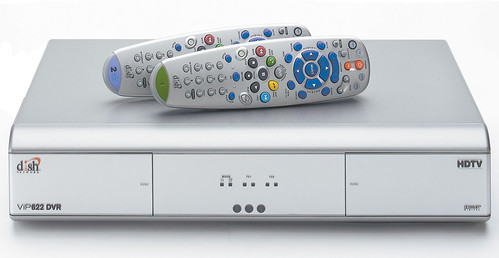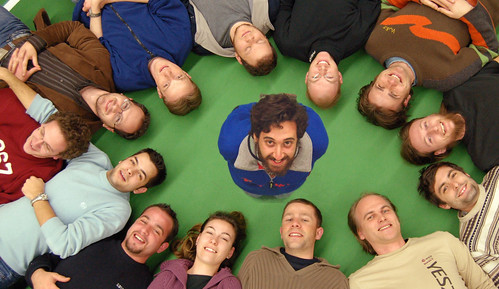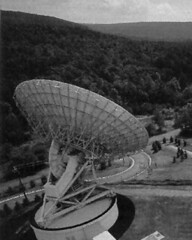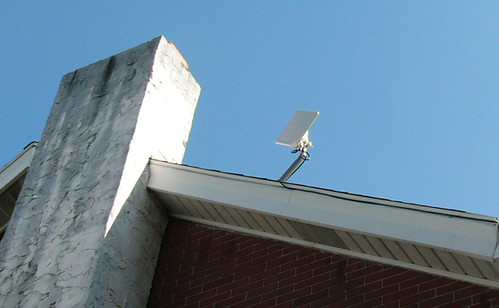Us rocket scientists love our Slingboxes. Whether at 35,000 feet, at a baseball game or hooked up as a traffic webcam. Our friends at Dish Network like them enough to buy them for $380 million, according to Transmitter News:
EchoStar Communications Corporation has agreed to acquire Sling Media, Inc., a privately-held digital lifestyle products company. EchoStar, through its DISH Network®, is the third largest pay-TV provider in the United States. The transaction values Sling Media at approximately $380 million and is payable in cash and EchoStar options. The transaction is subject to customary closing conditions, and is expected to close in the fourth quarter of 2007.
Established in 2004, Sling Media has been a leading innovator in the digital lifestyle space through the introduction of the internationally-acclaimed, Emmy award-winning Slingbox™ and SlingPlayer™ software. Sling Media’s product line is distributed in over 5,000 retail stores in 11 countries.
In 2006, Sling Media created the Sling Entertainment Group with the mission of developing entertainment experiences and business models that reach beyond the Slingbox. The group also fosters and manages relationships with content creators and owners. Its first initiative, Clip+Sling™, dramatically changes the way consumers socialize around TV by enabling users to clip and share limited segments of their favorite television programming.
“As an early investor in Sling Media, EchoStar has been pleased with the progress and commitment the company has made establishing Sling Media and the Slingbox as powerful and beloved digital media brands,” said Charlie Ergen, CEO and co-founder of EchoStar. “With today’s increasingly mobile lifestyle, EchoStar’s acquisition of Sling Media will allow us to offer innovative and convenient ways for our customers to enjoy their programming on more displays and locations, including TVs, computers and mobile phones, both inside and outside of the home. This combination paves the way for the development of a host of new innovative products and services for our subscribers, new digital media consumers and strategic partners.”
“We are psyched to make this announcement. We have worked closely with EchoStar for more than two years, and have come to realize that both companies have similar entrepreneurial cultures and mutual dedication and passion for creating empowering experiences that benefit the consumer and the media industry,” said Blake Krikorian, co-founder, chairman and CEO of Sling Media. “By combining strategies, resources and technologies with EchoStar, Sling Media will be able to rapidly expand our open multi-platform product offerings, not only for DISH Network subscribers, but for digital media enthusiasts around the globe.”

Scott Greczkowski is asking the right questions:
Last night’s late announcement that Echostar is acquiring Sling Media did not come as a big surprise to me. And while it did not surprise me it did set off a few flags in my head.
1) Will DISH Network keep Sling as a separate company or would they bring the technology and the company in house?
2) Sling Media is a Partner with DIRECTV and the NFL for delivering the NFL Sunday Ticket online, how will this deal affect this setup?
3) There are a number of other companies who are invested in Sling Media including the soon to be parent company of DIRECTV, Liberty Media. How does this deal affect them?
4) What is going to happen to unreleased products such as the Sling Catcher?
5) When will we see the first receiver from Echostar that has built in Slingbox functionality?
I personally hope that DISH continues to allow Sling Media to be Sling Media, a separate company, a company with some amazing thoughts and ideas.
I personally own 3 Slingbox units and I honestly consider it to be the best consumer electronics device made so far in the 21st century! No matter where I am at I can watch and I can control all of my satellite receivers, I can even watch and control things on my PDA/Phone. Having a 4 year old, the Slingbox has been a godsend, especially when you’re out at a restaurant and your child is being loud. When this happens I pull out my cell phone, log into one of my Slingbox units change the channel to Noggin and give the phone to my son, and now a noisy child is a quiet happy child.
Echostar to spin off?
As I was writing this column I got a press release from Echostar saying that they were considering spinning off its hardware division. The question is what does this mean?
Now I am not a stock guy (and I should state for the record that I own no stock in any satellite company) but what this signals to me is that sometime in the future we could see Echostar selling off it’s Dish Network service to another company, all while continuing to make equipment for Dish Network and while retaining ownership of the Echostar satellite fleet.
Is this what they are planning? Your guess is as good as mine. But it does make you go hmm.








 Loral and its Canadian partner, the Public Sector Pension Investment Board (PSP Investments),
Loral and its Canadian partner, the Public Sector Pension Investment Board (PSP Investments), 


